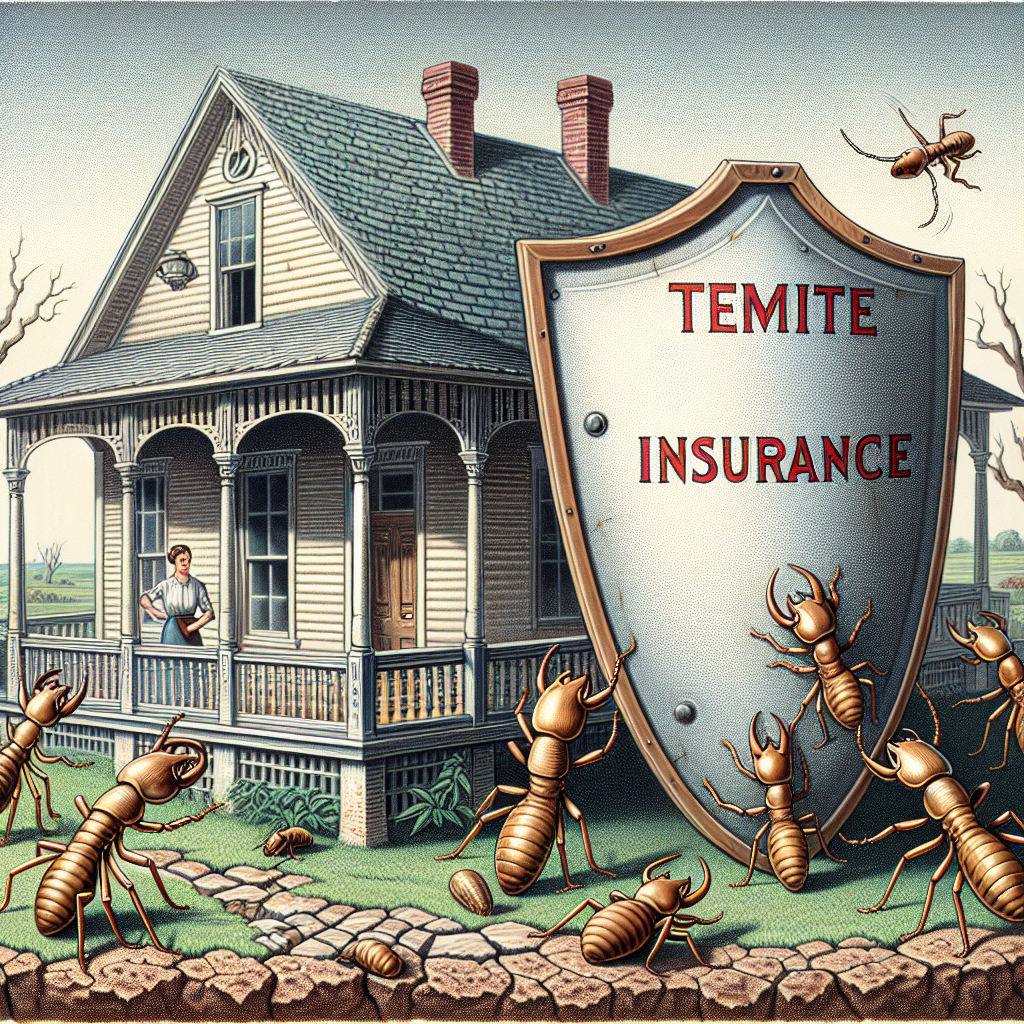Filed under Home Insurance on
Understanding Termite Coverage in Home Insurance

When it comes to safeguarding your home, understanding the nuances of your insurance policy is crucial. One often overlooked aspect is termite coverage in home insurance. Many homeowners may not fully grasp what their policy covers regarding these destructive pests, and it's essential to be informed to protect your investment appropriately.
What is Termite Coverage?
Termite coverage in home insurance refers to the protection a policy offers against damages caused by termites. These tiny insects are known for their ability to silently wreak havoc on a property, and understanding your insurance policy's stance on termite damage is important for all homeowners.
The Basics of Home Insurance
Home insurance typically covers a range of perils, such as fires, storms, vandalism, and more. However, termite damage is often excluded as it is considered preventable through regular maintenance. This exclusion means that policyholders may need to look for additional termite coverage or consider alternative methods of protection.
Why Termite Damage is a Concern
Termite damage can be devastating. These pests consume wood, compromising the structural integrity of your home. Over time, infestations can lead to costly repairs, affecting the home's value and safety.
- Structural Damage: Termites can weaken beams, floors, and walls, leading to expensive repairs.
- Financial Burden: Repairing termite damage can cost thousands of dollars, creating a financial strain for homeowners.
- Resale Value: A history of termite damage can decrease the resale value of your home.
Understanding Standard Policies
Most standard home insurance policies exclude termite damage. This is because insurers view termite infestations as a maintenance issue rather than a sudden or accidental event. Homeowners are expected to take preventive measures, such as regular inspections and maintenance, to avoid infestations.
Preventive Measures and Their Importance
Preventive measures are critical in managing the risk of termite infestations. Regular inspections by pest control professionals can help detect early signs of infestation, enabling timely intervention. Here are some key preventive steps:
- Annual termite inspections.
- Maintenance of proper ventilation and drainage around the home.
- Elimination of wood-to-soil contact where possible.
Exploring Additional Termite Coverage
Given the limitations of standard home insurance, homeowners might consider purchasing additional termite coverage or a termite bond. A termite bond is a specialized agreement with a pest control company that includes regular inspections and treatment if termites are detected.
The Role of a Termite Bond
A termite bond acts like a service contract. It ensures that a pest control company will conduct regular inspections and treatments to keep your home termite-free. It's also worth noting that some bonds cover damage repairs, providing an added layer of financial protection.
Evaluating the Need for Termite Coverage
When deciding whether to invest in additional termite coverage, consider the following factors:
- Location: Areas with a high prevalence of termites may necessitate additional coverage.
- Home Structure: Homes with wooden structures are more susceptible to termite infestations.
- Financial Cushion: Evaluate your ability to absorb the cost of termite damage should it occur.
Consulting with Experts
Insurance agents and pest control professionals can provide valuable insights into whether additional termite coverage is advisable for your specific situation. Their expertise can guide you in customizing a plan that fits your needs.
The Insurance Industry's Approach to Termite Coverage
Insurance companies continue to view termite coverage as separate from standard policies due to the nature of the risk involved. Industry trends reveal a growing awareness among homeowners, leading to increased interest in supplemental coverage and termite bonds.
Trends and Innovations
The rise of smart home technology and improved building materials offers new ways to combat termite risks. Homeowners are increasingly leveraging technology to monitor potential infestations and mitigate damage proactively.
Conclusion
Understanding how termite coverage in home insurance works is key to making informed decisions about protecting your home. While standard policies often exclude termite damage, additional coverage options like termite bonds can offer peace of mind. By taking proactive measures and consulting with professionals, homeowners can effectively manage the risk of termite infestations, protecting both their property and their financial investment.
Staying informed about termite coverage ensures that you are prepared for any scenario regarding your home, turning potential challenges into manageable situations with the right knowledge and strategies in place.





